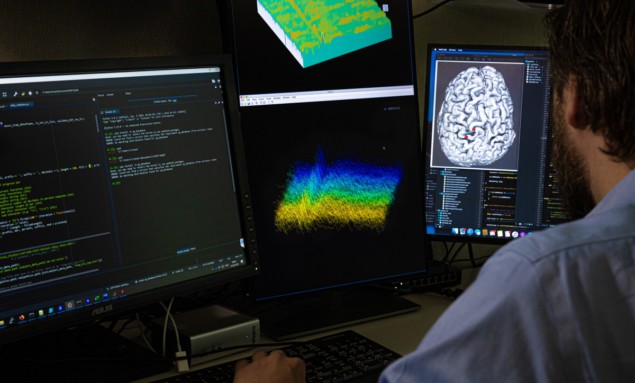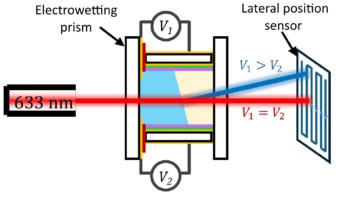
Scientists have successfully used an implanted brain–computer interface (BCI) to enable a person with complete paralysis to communicate – suggesting that verbal communication with such devices may one day be possible for patients in a completely locked-in state.
Electrode arrays
For the trial, a team from the Wyss Center for Bio and Neuroengineering, ALS Voice and the University of Tübingen implanted a type of BCI called an auditory neurofeedback system into the brain of a 34-year-old male patient with amyotrophic lateral sclerosis (ALS) – also known as motor neurone disease. The patient was in a completely locked-in state and had no voluntary muscular control. After implantation, he could form words and phrases and communicate at an average rate of about one character per minute.
Reporting their findings in Nature Communications, the researchers describe how they inserted two tiny 3.2 x 3.2 mm microelectrode arrays, known as Utah arrays, into the surface of the participant’s motor cortex – the part of the brain responsible for movement.

Each array contains 64 needle-like electrodes that record neural signals, before transferring them to a computer via a wired connection. Software then decodes the data and runs an auditory feedback speller that prompts the user to select letters to form words and sentences. The participant learned how to alter his own brain activity according to the audio feedback received, enabling him to select letters and ultimately spell words and sentences.
As joint lead author Jonas Zimmermann, senior neuroscientist at the Wyss Center, explains, the participant, who lives at home with his family, expressed his wish to take part in the clinical case study before he became completely locked-in.
“A member of the research team was usually present at the patient’s home for experimental sessions,” explains Zimmerman. “Every day the system was in use, there was first a calibration and training session to adapt the software to changes in brain activity. When we were convinced that there was reliable enough control, we ran the speller.”
Based on previous work by the Wyss Center and other groups, Zimmerman says the team had a strong belief that, in this case too, a locked-in patient could communicate using electrodes implanted directly into the brain.
“The patient changes the activity of single neurones. He hears the activity as a sequence of lower pitch or higher pitch tones, depending on how much the neurones are active. We can then ask him to hold the tone high to say ‘yes’ and hold it low to say ‘no’. This enables him to select letters and ultimately spell words and sentences,” he explains.
Wireless device
According to Zimmerman, the study answers a long-standing question about whether people with complete locked-in syndrome (CLIS) – who have lost all voluntary muscle control, including movement of the eyes or mouth – also lose the ability of their brain to generate commands for communication. Successful communication has previously been demonstrated with BCIs in individuals with paralysis but, to Zimmerman’s knowledge, this study is the first to achieve communication by someone who has no remaining voluntary movement and hence for whom the BCI is now the sole means of communication.
“For our participant there are no alternative approaches for communication. He has amyotrophic lateral sclerosis (ALS) – a progressive neurodegenerative disease in which people lose all ability to talk and to move. He cannot move his eyes nor voluntarily move any muscles, so the BCI is his only means of communicating with his family and medical caregivers,” notes Zimmerman.

Novel decoder helps people with paralysis click-and-drag a computer cursor using just their thoughts
At present, the BCI system used in the study is for clinical investigations only and is not available outside a research setting. Further demonstrations of its longevity, applicability in other patients, safety and efficacy are needed before it is suitable for widespread clinical use.
“At the Wyss Center, we are currently developing ABILITY, a wireless implantable BCI device for clinical use in people with CLIS,” Zimmerman adds. “Use of a wireless device avoids the potential infection risk associated with the percutaneous cable that connects the electrodes to the computer. We also plan to use this system for speech decoding. The next step is validating the new ABILITY device in pre-clinical and clinical trials.”



